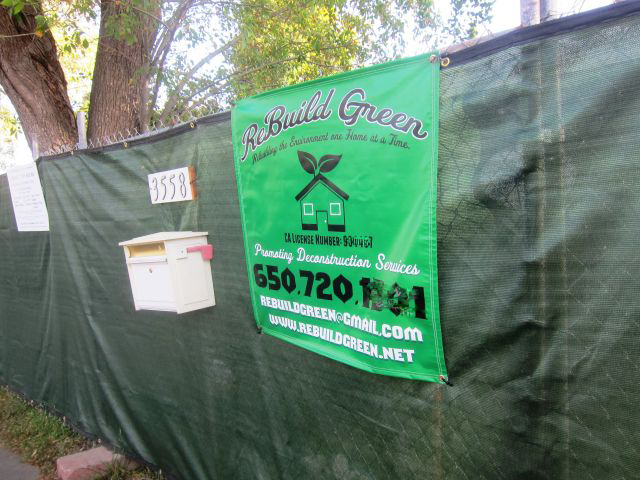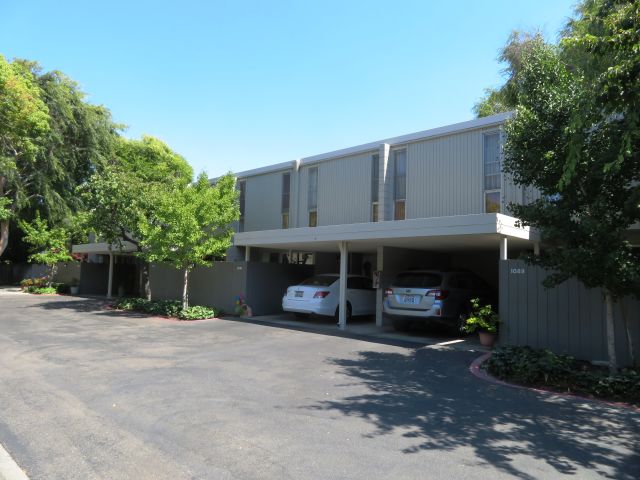
Now’s the Time to Save the Neighborhood
 |
|
|
The scene is all too familiar. Neighbors in an Eichler neighborhood arrive home one afternoon to see story poles on the house next door, announcing plans to add a second story. Can something be done to prevent this – before those poles go up? Read about people who are protecting their neighborhoods proactively in ‘Why Wait ‘Til it’s Too Late’ in the new winter ’19 issue of CA-Modern magazine.
Over the past few years neighborhood after neighborhood in Silicon Valley has been rocked when owners have torn down single-story homes or added a story.
Neighbors, lulled, perhaps, by somnolence, had to scramble at the last minute to preserve their neighborhoods.
One such instance occurred in Sunnyvale, when what neighbor John Sulllivan called “a monster house” was proposed for Fairbrae Addition, spurring people there to seek and get single-story zoning to protect them from such intrusions – in the future. But they had acted too late to stop the first monster.
Since then, any number of Sunnyvale Eichler areas have sought and received such zoning protection.
Similar problems in Palo Alto led to the development of Eichler guidelines for remodels that are suggestive, but not mandatory.
 |
|
|
But consider the city of Orange, which has taken a more aggressive path – one that other neighborhoods could consider emulating. There, three Eichler tracts, working very closely with city officials, helped turn their neighborhoods into local historic districts – and adopted real regulations to protect them from unwanted changes.
In Orange, efforts to preserve the three, largely intact tracts – Fairhaven, Fairmeadow, and Fairhills – were underway by 2010. The homes were built from 1960 to 1963. Real estate broker Kelly Laule spearheaded an effort to place the homes on the National Register.
Being named to the Register would be a great honor and would make clear to local officials that these are, indeed, preservation-worthy tracts. But in Orange, which has other, older historic districts, planners already knew that.
Soon, other residents were working to create a local historic district instead. Local may not sound as grand as 'national,' but a local district can be powerful. Often, cities impose regulations alone that have real teeth. No such regulations come with national recognition.
In the Bay Area, meanwhile, several Eichler neighborhoods are looking to create historic districts to do the same. A like-minded effort is underway in the city of Davis to preserve a wonderful neighborhood of mid-century modern homes designed by the Streng Brothers.
 |
|
|
The Eichler condo complex of Pomeroy Green in Santa Clara is well along the path towards historic designation, thanks to resident Ken Kratz.
Fifty years is considered the magic age at which a property can be designated historic by way of the National Register. Kratz took that to heart.
“We were built in 1963,” he says, “and the day before we became 50 years old I was on it.”
Still, preserving a neighborhood through historic designation is not easy. Nor is it the only strategy that can be followed. Others involve seeking various forms of zoning changes.
Besides the hard work of documenting and politicking, much of the challenge comes in convincing neighbors that historic or zoning protections are a good thing, and will neither depress property values nor make it impossible or overly burdensome for homeowners to make simple changes to their homes.
 |
|
|
In that light, the example of Orange is inspirational. People there worked very carefully to educate all of their neighbors, listening to concerns, holding meetings and workshops. As a result, almost everyone favored the plan.
Only a handful spoke against it at the Orange City Council meeting that saw approval for the historic districts and the rules to protect them.
For more on preserving your neighborhood, read ‘Why Wait ‘Til it’s Too Late,’ a sneak preview of the new winter ’19 issue of CA-Modern.
- ‹ previous
- 444 of 677
- next ›



